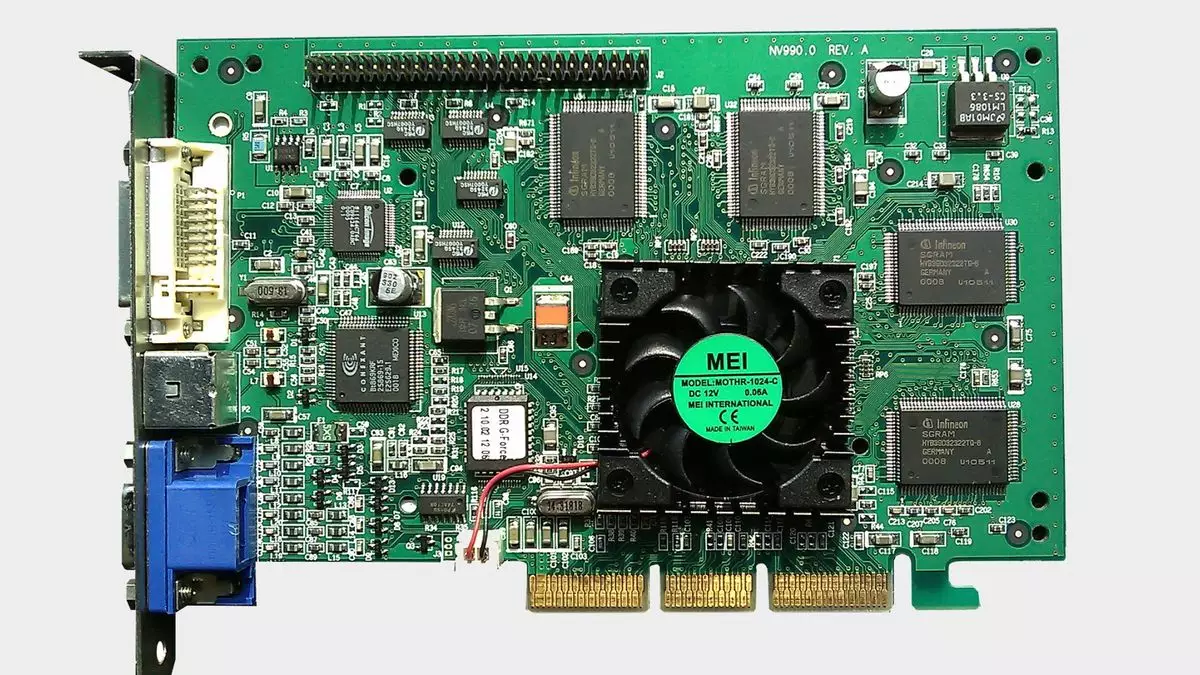As technology milestones come and go, today marks a significant anniversary for the world of computer graphics: the GeForce 256 turns 25 years old. Released on October 11, 1999, this unassuming graphics card played a pivotal role in shaping the gaming landscape as we know it today. While it may not boast the capabilities of contemporary GPUs, the GeForce 256 stands as a testament to innovation and the beginning of what we now recognize as graphics processing units (GPUs).
Nvidia’s marketing efforts at the time notably shifted public perception and terminology regarding graphics processing. Though the term “GPU” had previously been associated with the PlayStation 1, it was Nvidia that popularized it in relation to PC gaming. This recognition merits a closer look, particularly as we explore how the GeForce 256 influenced both hardware and game development.
With its 32 MB of memory and a core clock speed of 120 MHz, the GeForce 256 was a groundbreaking figure in its time. However, it wasn’t just the numbers that shocked audiences; it was the technology that facilitated a dramatic transformation in the way games were developed and rendered. One of its significant features was the introduction of hardware-accelerated transform and lighting (T&L) capabilities. By transferring these computationally intensive processes from the CPU to the GPU, the GeForce 256 effectively empowered developers to create visually stunning 3D environments, with higher polygon counts and richer textures, than was previously possible.
The GPU’s “256” designation refers to its QuadPipe Rendering Engine, which featured four 64-bit pixel pipelines able to support a 480 Mpix/sec fill rate. At the time, these specifications were the stuff of legend, offering up to a 50% performance increase compared to competing graphics cards like the 3dfx Voodoo3 3500 and the Nvidia RIVA TNT2 Ultra when running T&L-enabled games.
Reflecting on the GeForce 256 prompts us to consider how far graphics technology has progressed in the past 25 years. The year it debuted, 1999, was momentous not only for the release of the GeForce 256, but also for landmark video games like the first Unreal Tournament and Quake III Arena, which further showcased the capabilities of advanced graphics. These games required the kind of hardware acceleration that the GeForce 256 offered, merging software advancements with hardware potential to create immersive experiences.
When comparing the GeForce 256 to today’s flagship models—like the Nvidia RTX 4090, which boasts over 76 billion transistors—it becomes clear just how monumental the strides have been in the field of graphics. The 17 million transistors of the GeForce 256, once considered revolutionary, seem quaint in contrast to modern technology.
Nostalgia and Reflection
There’s a unique nostalgia associated with the GeForce 256 that resonates with many who experienced the early days of PC gaming. The small, often noisy cooling fans of early graphics cards, coupled with the thrill of playing newly released first-person shooters, created indelible memories for those who embraced gaming during that era. It was a time when upgrades were celebrated and new hardware was a source of excitement, implying not just better performance but a visual leap into uncharted territory.
As collectors and enthusiasts dig through old boxes of hardware, many are likely to unearth relics like the GeForce 256. These cards may be gathering dust, but they represent more than just outdated technology—they symbolize a foundational moment in gaming history. Rummaging through one’s attic might evoke a sense of pride not just for owning a piece of the past, but also in recognizing the humble beginnings that have led us to today’s graphical powerhouses.
A Toast to Gaming History
So, as the GeForce 256 celebrates its quarter-century mark, perhaps we should indulge in a moment of reflection. Acknowledging its role in the past can lead us to a greater appreciation for the technology we now take for granted. Whether through a simple toast, a celebratory cake, or a solemn moment of silence for the much-missed hardware, the GeForce 256 undeniably deserves a nod for its contributions to gaming.
In acknowledging this milestone, we honor not just a specific device, but an entire generation of hardware that has flavored our gaming journey. It urges us to celebrate the vivid tapestry of advancements in graphics technology, reminding us to appreciate where we’ve been as technology continues to evolve, unleashing endless possibilities for gamers worldwide. Cheers to the GeForce 256 and the bright future of gaming ahead!

